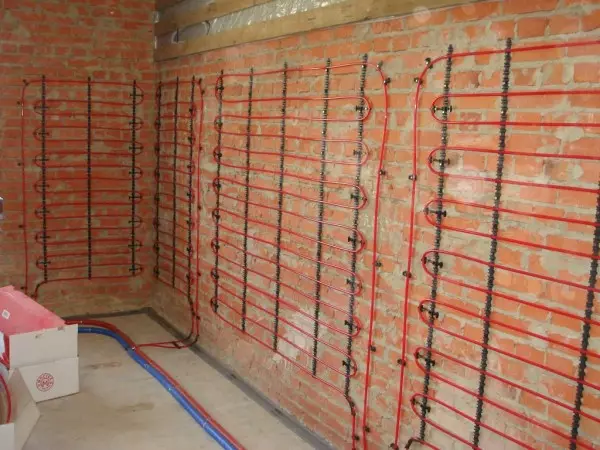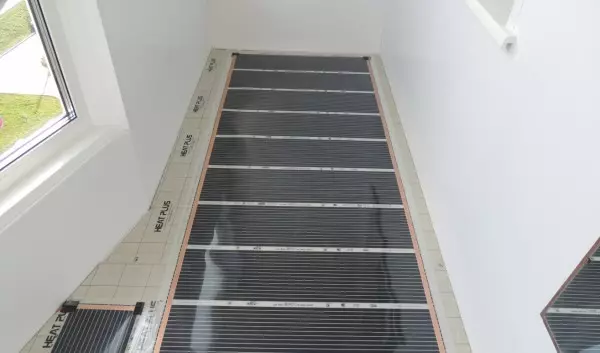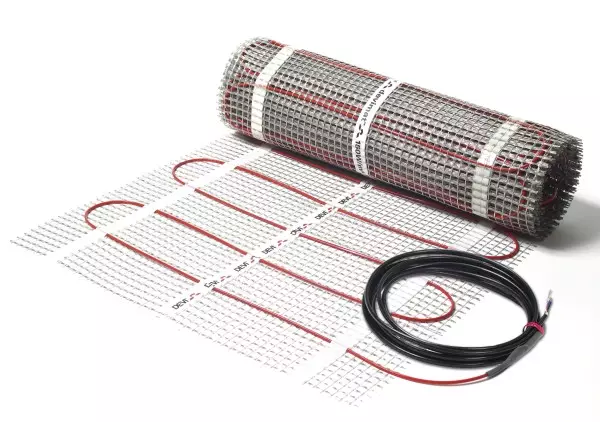Wall heating is considered to be innovation today. Warm walls at home and the floor is convenient, comfortable and economical. In this article, I will tell you about the benefits of warm walls, what is the difference between water, infrared and electric, as well as the ladies of useful tips that will help you decide with the choice.
Benefits of insulation of walls
We note several basic advantages that usually play an important role and affect the choice of certain materials for the insulation of your home.- A rather high efficiency. Wall heating gives high heat transfer. Radiators, for example, give interest 50-60, and here water walls are much higher - 85%. You can maintain a comfortable temperature, significantly reducing the use of coolants. Result: Gas savings by 10% compared with radiator batteries.
- The convective flow decreases significantly. The heating system of warm walls has a unique scheme for the propagation of air flow in the room. In this regard, the circulation of dust disappears, which makes it possible to breathe freely, which is important in the closed room in the cold season.
- There is an opportunity to compensate for thermal losses. Such walls can work on the concept of a "smart home", carrying out the decrease in heat losses by the method of temperature difference between the main and reverse heating lines. This is achieved with the help of a thermal barrier.
- Dryness that will not give molds.
- The latitude of choice and the ability to create a new creative interior.
Wide capabilities give a system of external insulation Knauf warm wall.
Types of warm walls
The main species include the walls:
- water
- infrared
- Electric.
What do they imagine and how to mount them, I will tell further.
Article on the topic: Is it possible to put a new linoleum on the old
Water systems
The essence of such a system is as follows: the pipeline is placed and strengthened in the wall, then they attach to the heating unit. The water system is used in addition to the floor and radiator, so all its components are prepared and are appropriately mounted.

This includes:
- Pipes made of metal plastic or crosslinked polyethylene;
- collector cabinet;
- Circular pump;
- temperature sensor;
- thermostat;
- automation.
Installation of the system is produced in two ways: dry and wet. A dry method allows the use of coating (false panels), and the wet - the process itself occurs inside the layers of plaster.
If you use a plaster coating (wet method), then install water systems are necessary:
- Clean, place the wiring and electric core.
- Install the heat unit.
- Start the plates of polystyrene foam, vaporizolation on them (it is allowed to use fine foil insulation).
- Strengthen the mounting tires (or fastening clamps).
- Place the zigzag pipeline on the wall.
- Connect the pipes to the node through the collectors.
- Perform the crimping pipes (the pressure should be higher than the working time in one and a half).
- Attach the firmware reinforcing.
- Apply a thin layer of plaster plaster.
- Strengthen the thermal sensor under the top layer.
- After the wall dies, apply a lime-cement layer with a thickness of 2-3cm.
- Strengthen the thin mesh on top of the plaster. This will help avoid cracks.
Mounting with a dry way:
- On the purified wall, fasten the polystyrene foam, vapor insulation and foam film.
- Strengthen the mounting tires.
- Install the pipe on the wall, connect and check how it works.
- Install the frame from bars or metal.
- Secure on the frame of the Fiberboard slabs (plasterboard, plastic, etc.).
Water system in the hot season can be used as cooling air (like air conditioning).
Infrared systems
Infrared walls are warm - this is the most progressive method of heating in the house, with a very good reputation for customers and manufacturers. You can easily and conveniently assemble carbon mats (rod and film), without spending extra effort. Mats with special rods can be strengthened:
Article on the topic: Bath Decor do it yourself

- under the stucco
- Under the skeleton.
Film mats can be easily pasted on thermal insulation, using special glue.
When working with film systems, you do not need to take steam and thermal insulation, which have an aluminum coating. And do not apply glue and plaster on infrared canvas.
Act with a dry method and according to the instructions that have been applied to the equipment. The installation process is extremely simple and consists of these steps:
- Prepare and clean the wall.
- Place the heat transferser.
- Install the crates so that they can be attached to mounted drywall, fiberboard, etc.
- Place and strengthen the mats with a dowel or construction stapler.
- Isolate the special cutting line of the cuts.
- Install the thermal sensor and thermostat.
- Check the system.
Using an infrared heater, you can make not only the warm floor, but also the wall.
Electrical cable systems

This equipment is considered effective and economical. The current passes through the cable and heats them. The composition of the electrical system includes:
- Heating cable (or thin mats with cable on them).
- Equipment for switching on, heating and shutting down the entire system.
- Corrugated tube, mounting tires (ribbons).
- Protective device.
When installing this system under the plaster, we work similarly to water. Making a wall under the cable (or heating mats), it is better to take foamed foil polyethylene.
Cut mats clearly on the markup. Thermalistchik placing away from the floor or in the corrugated pipe.
The cable system must be turned off when you will be covered with plaster. You can use the system itself 28 days after everything will dry.
Otherwise, the installation is made similar to the installation of the water system.
Useful advice
- When you warm the wall in this way, you can apply such a trick. Puck the walls with warm wallpaper from the foamed polyethylene substrate under any of the types of outdoor wallpaper. So it is much more efficient to use wall-mounted equipment.
- If the heating loop is mounted between two rooms, you can warm up two rooms at once.
Spheres of use of warm walls
Warm walls are applied not only in residential premises, but also suitable for pools, baths, bathrooms and saunas. It is possible to place the above-described heating systems in office space, as well as even workshops and garages.
Video "Everything about the types of warm walls"
A detailed description of the types of warm walls. Analysis of the advantages and disadvantages of each type.
